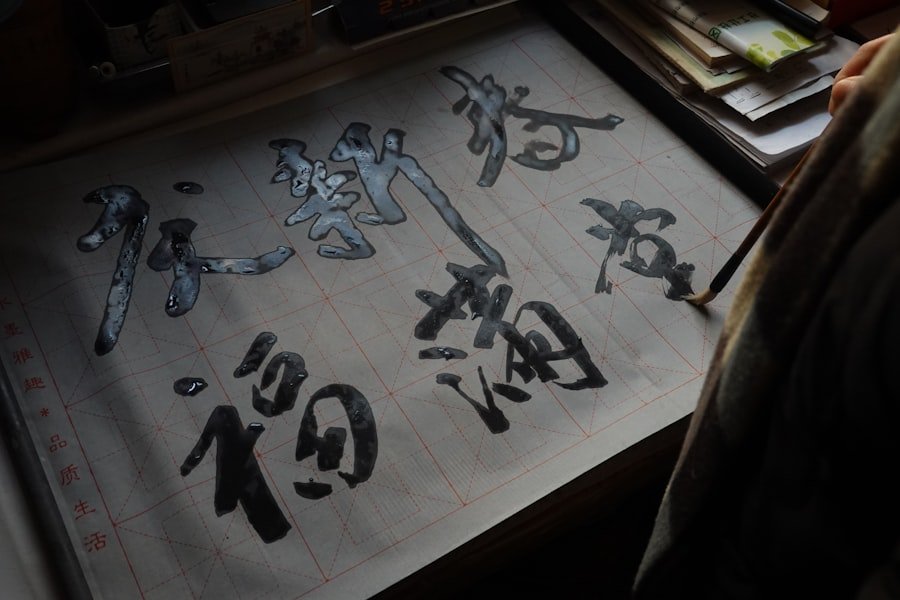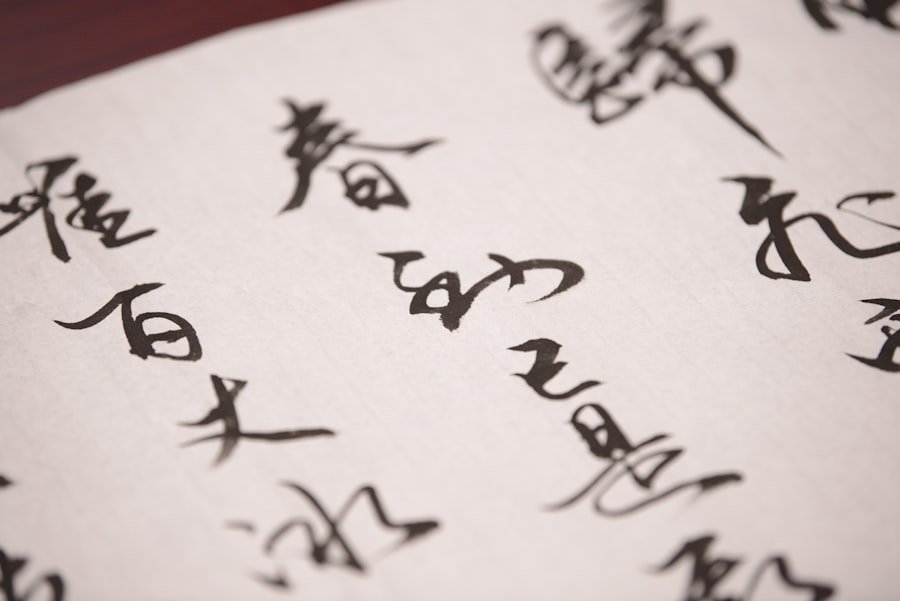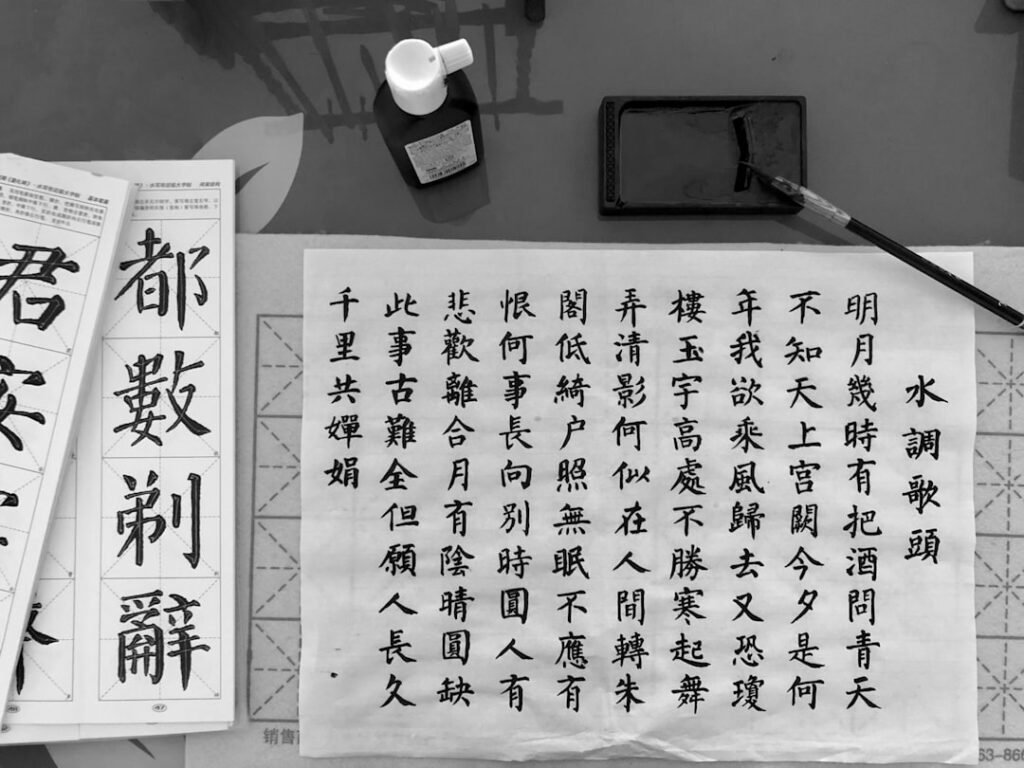Wang Xizhi, often hailed as the “Sage of Calligraphy,” is a towering figure in the annals of Chinese art and culture. Born in 303 AD during the Eastern Jin dynasty, his contributions to the art of calligraphy have left an indelible mark on the landscape of Chinese aesthetics. Among his most celebrated works is the “Preface to the Orchid Pavilion,” a piece that not only showcases his extraordinary skill but also encapsulates the philosophical and cultural ethos of his time.
This preface, written for a gathering of poets at the Orchid Pavilion, is revered not only for its artistic merit but also for its profound reflections on life, nature, and the transient nature of human existence. The “Preface to the Orchid Pavilion” is more than just a calligraphic masterpiece; it is a literary gem that has inspired generations of scholars, artists, and poets. The work is steeped in historical significance, as it was composed during a time when the arts flourished in China, and intellectual discourse was highly valued.
Wang Xizhi’s ability to weave together personal sentiment with broader philosophical themes has made this piece a cornerstone of Chinese literature and calligraphy. As we delve deeper into its historical context and artistic nuances, we uncover layers of meaning that continue to resonate with audiences today. Master the art of Chinese calligraphy. Enroll now at the LC Chinese School in Oslo.
Table of Contents
ToggleSummary
- Wang Xizhi, a renowned calligrapher in ancient China, is best known for his masterpiece “Preface to the Orchid Pavilion”, a seminal work in Chinese calligraphy.
- The “Preface to the Orchid Pavilion” holds great historical and cultural significance as it symbolizes the pursuit of artistic and intellectual pursuits in Chinese culture.
- Wang Xizhi’s calligraphy style is characterised by its fluidity, balance, and expressive brushwork, showcasing his mastery of the art form.
- The “Preface to the Orchid Pavilion” is rich in symbolism and themes, reflecting the beauty of nature, the transience of life, and the pursuit of scholarly pursuits.
- Wang Xizhi’s masterpiece has had a profound influence on Chinese calligraphy and art, inspiring generations of artists and calligraphers.
Historical and cultural significance of the “Preface to the Orchid Pavilion”
The historical backdrop of the “Preface to the Orchid Pavilion” is as rich as the text itself. Composed in 353 AD during a gathering of literati at the Orchid Pavilion in present-day Zhejiang province, this work emerged from a period marked by political instability yet vibrant cultural expression. The Eastern Jin dynasty was characterised by a flourishing of arts and letters, as scholars sought solace in creativity amidst societal turmoil.
Wang Xizhi’s preface reflects this duality—celebrating the beauty of nature while acknowledging the ephemeral nature of life. Culturally, the “Preface to the Orchid Pavilion” serves as a testament to the values of camaraderie and intellectual exchange that were paramount during Wang Xizhi’s era. The gathering at which it was written was not merely a social event; it was an opportunity for like-minded individuals to engage in poetic discourse, fostering a sense of community through shared artistic pursuits.
This emphasis on collective creativity is a recurring theme in Chinese culture, where art often serves as a bridge between individuals and their surroundings. The preface thus stands as a symbol of cultural unity, encapsulating the spirit of collaboration that defined Wang Xizhi’s time.
Analysis of the calligraphy style and techniques used by Wang Xizhi

Wang Xizhi’s calligraphy is renowned for its fluidity and grace, characteristics that are vividly displayed in the “Preface to the Orchid Pavilion.” His style is often classified as semi-cursive, a form that strikes a balance between legibility and artistic expression. This technique allows for a dynamic flow of ink, creating an organic rhythm that mirrors the natural world—a reflection of Wang’s deep appreciation for nature’s beauty. Each stroke in his calligraphy appears effortless yet deliberate, showcasing his mastery over brushwork.
The techniques employed by Wang Xizhi are not merely technical; they are imbued with philosophical significance. His use of varying stroke thickness and speed creates a sense of movement within the text, evoking the ebb and flow of life itself. The way he manipulates ink density adds depth to his characters, inviting viewers to engage with the work on multiple levels.
Furthermore, Wang’s ability to convey emotion through calligraphy is unparalleled; each character resonates with a sense of vitality that transcends mere words. This interplay between technique and emotion is what sets Wang Xizhi apart as a true innovator in the realm of calligraphy.
The symbolism and themes present in the “Preface to the Orchid Pavilion”
The “Preface to the Orchid Pavilion” is rich with symbolism and thematic depth, reflecting both personal introspection and universal truths. One prominent theme is the transience of life, encapsulated in Wang Xizhi’s reflections on mortality during the gathering. He muses on the fleeting nature of human experiences, likening them to the ephemeral beauty of flowers that bloom only to wither away.
This poignant observation resonates deeply within Chinese philosophy, particularly within Daoist thought, which emphasises harmony with nature and acceptance of life’s impermanence. Additionally, the preface explores themes of friendship and camaraderie among scholars. The gathering at Orchid Pavilion serves as a microcosm of intellectual exchange, where poets share their thoughts and emotions through verse.
Wang Xizhi’s celebration of these connections underscores the importance of community in artistic expression. The act of writing becomes a communal experience, where individual voices harmonise to create something greater than themselves. This theme of unity through art is central to understanding not only Wang Xizhi’s work but also the broader cultural context in which it was created.
Influence of the “Preface to the Orchid Pavilion” on Chinese calligraphy and art
The impact of Wang Xizhi’s “Preface to the Orchid Pavilion” on Chinese calligraphy cannot be overstated. It has served as a benchmark for generations of calligraphers who aspire to emulate his style and philosophical depth. The preface has been studied extensively in calligraphy schools across China, where students learn not only the technical aspects but also the underlying principles that inform Wang’s approach to art.
His work has inspired countless artists to explore their own interpretations of beauty and expression through brushwork. Moreover, the “Preface to the Orchid Pavilion” has transcended its original context to influence various forms of Chinese art beyond calligraphy. Its themes have permeated poetry, painting, and even contemporary literature, where writers draw upon Wang Xizhi’s reflections on life and nature.
The preface’s enduring relevance speaks to its universal appeal; it resonates with anyone who grapples with questions of existence and seeks solace in artistic expression. As such, Wang Xizhi’s legacy continues to shape not only calligraphy but also the broader landscape of Chinese art.
Comparison with other famous Chinese calligraphy works

When comparing Wang Xizhi’s “Preface to the Orchid Pavilion” with other notable works in Chinese calligraphy, one cannot overlook its unique position within this rich tradition. For instance, works by his contemporaries such as Zhang Xu and Ouyang Xun exhibit distinct styles that reflect their individual philosophies and techniques. Zhang Xu’s wild cursive script is characterised by its energetic strokes and spontaneity, while Ouyang Xun’s regular script embodies precision and clarity.
In contrast, Wang Xizhi’s semi-cursive style strikes a harmonious balance between these extremes, allowing for both expressiveness and readability. Additionally, when juxtaposed with later masters like Su Shi or Zhao Mengfu, Wang Xizhi’s influence becomes even more pronounced. Su Shi’s calligraphy often incorporates poetic elements that echo Wang’s themes of nature and transience, while Zhao Mengfu’s work reflects a synthesis of various styles influenced by Wang’s innovations.
The “Preface to the Orchid Pavilion” serves as a foundational text that informs these later developments in calligraphy, illustrating how Wang’s artistry continues to inspire new generations while remaining firmly rooted in tradition.
Preservation and conservation of the “Preface to the Orchid Pavilion”
The preservation and conservation of Wang Xizhi’s “Preface to the Orchid Pavilion” are crucial for maintaining its historical integrity and cultural significance. Over centuries, various copies have been made, each contributing to our understanding of this masterpiece while also presenting challenges for preservationists. The original work has unfortunately been lost to time; however, numerous replicas exist that allow scholars to study its stylistic nuances and thematic depth.
Efforts to conserve these replicas involve meticulous techniques aimed at preserving ink quality and paper integrity. Institutions dedicated to Chinese art often employ advanced technology alongside traditional methods to ensure that these works remain accessible for future generations. Additionally, exhibitions showcasing these pieces play an essential role in raising awareness about their significance within Chinese culture.
By engaging audiences with interactive displays and educational programmes, institutions can foster appreciation for Wang Xizhi’s contributions while highlighting ongoing efforts in preservation.
The impact of Wang Xizhi’s “Preface to the Orchid Pavilion” on literature and poetry
Wang Xizhi’s “Preface to the Orchid Pavilion” has had a profound impact on literature and poetry throughout Chinese history. Its lyrical quality and philosophical depth have inspired countless poets who seek to capture similar sentiments in their own works. The preface serves as an exemplar of how language can evoke emotion while simultaneously reflecting on broader existential themes—an aspiration shared by many writers across generations.
Moreover, its influence extends beyond traditional poetry into modern literary forms as well. Contemporary authors often reference Wang Xizhi’s reflections on friendship and transience when exploring themes related to human connection or mortality in their narratives. This intertextual dialogue between past and present highlights how timeless ideas can resonate across different contexts, allowing Wang’s insights into life’s fleeting moments to remain relevant even today.
Modern interpretations and adaptations of the “Preface to the Orchid Pavilion”
In recent years, there has been a resurgence of interest in modern interpretations and adaptations of Wang Xizhi’s “Preface to the Orchid Pavilion.” Artists from various disciplines have sought new ways to engage with this classic text—whether through visual art installations that reinterpret its themes or contemporary poetry that draws inspiration from its lyrical qualities. These adaptations serve not only as homage but also as an exploration into how ancient wisdom can inform modern sensibilities. Furthermore, digital media has opened up new avenues for engagement with this iconic work.
Online platforms allow for interactive experiences where audiences can explore different interpretations or participate in discussions surrounding its themes. This democratization of access ensures that Wang Xizhi’s legacy continues to evolve while remaining rooted in its historical context—a testament to both its enduring relevance and adaptability.
Wang Xizhi’s legacy and influence on Chinese art and culture
Wang Xizhi’s legacy extends far beyond his own lifetime; it has shaped not only calligraphy but also broader aspects of Chinese art and culture throughout history. His innovative techniques laid foundational principles that continue to inform contemporary practices within various artistic disciplines today. Moreover, his emphasis on emotional expression through brushwork resonates deeply within traditional Chinese aesthetics—where art serves as both personal reflection and communal dialogue.
In addition to influencing artists across generations, Wang Xizhi’s work has also played an integral role in shaping cultural identity within China itself. The reverence for his contributions reflects a collective appreciation for artistic excellence—a value that remains central within Chinese society today. As such, his legacy endures not merely as an individual achievement but rather as part of a larger narrative celebrating creativity’s power across time.
The enduring legacy of Wang Xizhi’s “Preface to the Orchid Pavilion”
In conclusion, Wang Xizhi’s “Preface to the Orchid Pavilion” stands as a monumental achievement within both calligraphy and literature—a testament to his unparalleled skill and profound insights into life’s complexities. Its historical significance resonates through centuries while continuing to inspire contemporary artists who seek meaning through creative expression. As we reflect upon this masterpiece today—whether through scholarly study or artistic adaptation—we are reminded not only of its beauty but also its capacity for fostering connection among individuals across time.
For those wishing to delve deeper into this rich tradition or explore their own artistic potential inspired by such masterpieces, courses in Chinese calligraphy are available at institutions like LC Chinese School in Oslo. These courses offer an opportunity for individuals to learn from experienced instructors who guide students through traditional techniques while encouraging personal expression—a fitting homage to Wang Xizhi’s enduring legacy within contemporary practice. Through such educational initiatives, we ensure that his spirit continues to thrive within future generations—celebrating creativity as an essential aspect of human experience across cultures worldwide.
Master the art of Chinese calligraphy. Enroll now at the LC Chinese School in Oslo.







